Elite Hair Centers
We know that choosing a hair restoration provider is an important decision. At Elite Hair Centers, our unique dermatology and plastic surgery team is dedicated to delivering exceptional results with expertise and passion. This is what sets us apart from the competition.
Follicular Unit Extraction (FUE)
Hair transplantation is a surgical technique that moves groups of hair follicles (follicular units) from one part of the body (typically the back or sides of the scalp) to balding or thinning areas on the scalp, providing a permanent solution for certain types of hair loss in both men and women. The procedure is based on the principle of “donor dominance,” meaning that the transplanted hair follicles from the donor area remain resistant to balding and will not miniaturize over time.
There are two main methods of hair transplantation: follicular unit transplantation (FUT) and follicular unit extraction (FUE). FUT involves removing a strip of skin containing hair follicles from the donor site, dissecting it into individual follicular units, and transplanting them into the recipient site. This procedure leaves a thin linear scar in the occipital scalp. FUE, on the other hand, extracts individual follicular units directly from the donor site one by one using a small punch tool before transplanting them into the recipient site.
Both FUT and FUE can produce excellent results, with the choice of technique depending on the patient’s individual needs and preferences. FUT may be preferred for patients requiring a larger number of grafts or with more extensive balding areas, while FUE is often favored by patients who want to avoid a linear scar and wear their hair short in the back. FUE also offers versatility by allowing non-scalp hair harvesting, such as from the chest or beard, if the scalp donor supply is limited. Generally, most patients prefer FUE, which is the service we provide in our office.
The success of hair transplantation depends on several factors, including the surgeon and their team’s skill and experience, the quality and quantity of donor hair, and the patient’s individual characteristics. A good candidate for hair transplantation is typically in good health, has a stable pattern of hair loss, and adequate donor capacity. Our ability to restore one’s hair loss is determined by the number of hairs that can be taken from the donor area without making that area too thin. In general, approximately 4-5,000 grafts can be taken from the donor site with FUE (although this varies from person to person). For reference, around 2,000 grafts may be needed to rebuild the frontal hairline and anterior scalp, over 4,000 to rebuild the entire top (excluding the vertex), and at least 3,000 to rebuild the vertex scalp. The more grafts available, the better coverage someone will achieve after their transplant. Thus, it’s essential to understand the procedure’s limitations and that multiple sessions over time or a combination with medical therapy may be required for optimal results.
Patients should be aware that they will continue to lose non-transplanted hairs within susceptible areas following hair transplantation. Continuing medical treatment with minoxidil, finasteride, LLLT, or PRP after a hair transplant procedure may help limit further loss. In a randomized trial of 79 men who underwent hair transplantation for androgenetic alopecia, those treated with finasteride 1 mg for four weeks before and 48 weeks after the transplant achieved better results. Visible increases in superior/frontal scalp hair post-transplant were recorded for 94% of patients in the finasteride group compared to 67% in the placebo group. Therefore, concurrent use of finasteride will provide increased density post-transplant, especially in the most cosmetically critical areas.
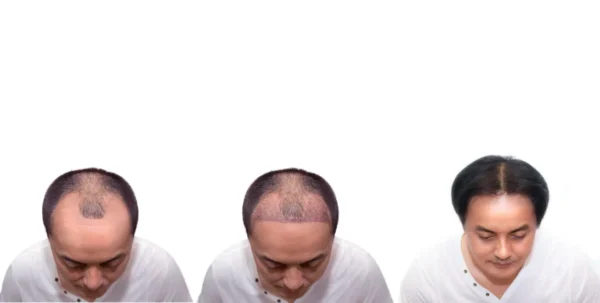
Before and after transplant
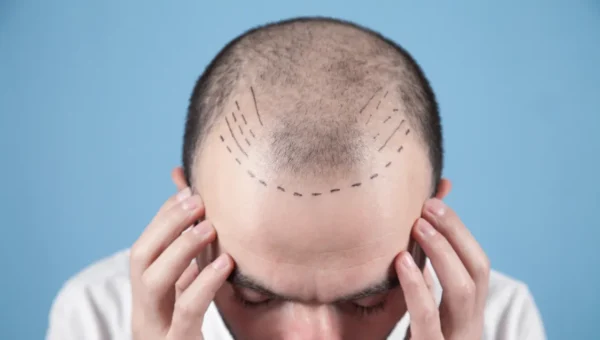
Creating hairline
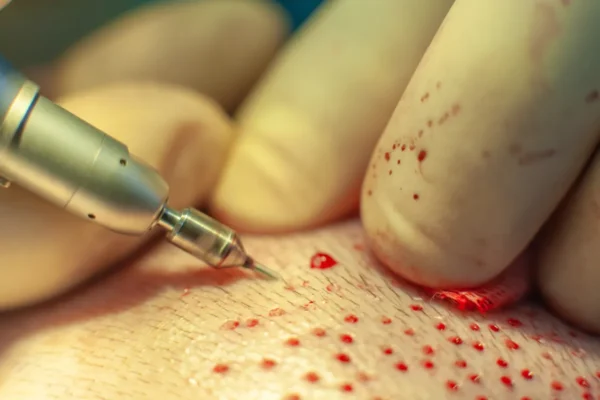
Graft harvesting
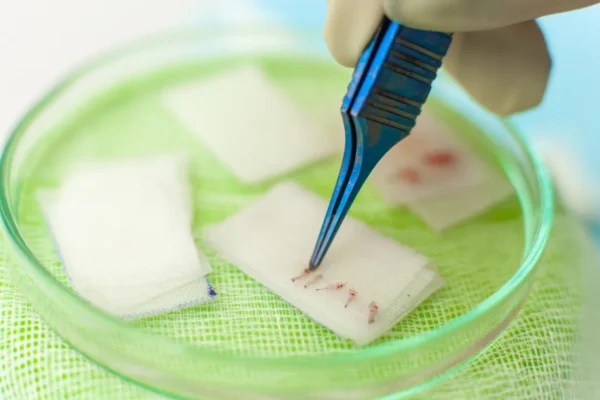
Collecting grafts
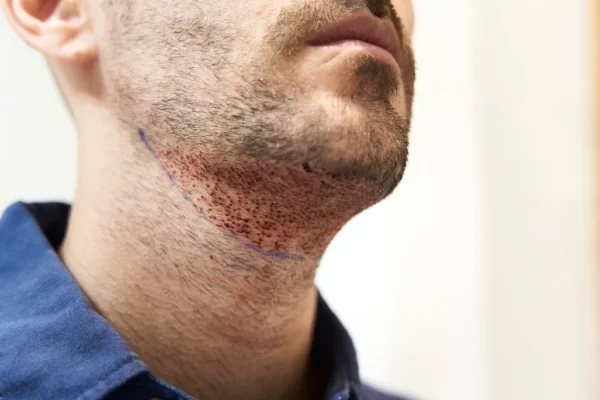
After grafts placed in beard
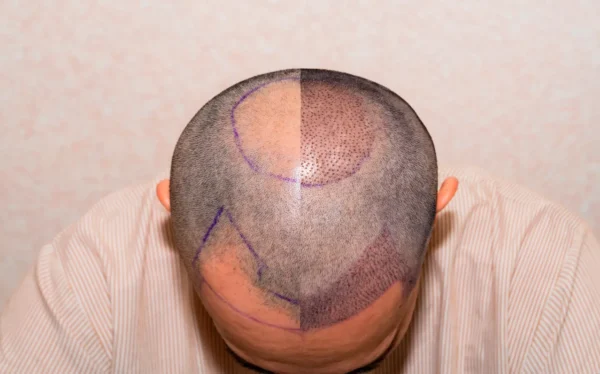
Before and after grafts placed
It’s crucial to understand that a hair transplant is the only way to put hair in a completely bald area. If no hairs are visible, medical management will be ineffective.
Hair transplantation is generally a safe and effective procedure with few risks and complications. Some common side effects include temporary swelling, redness, and scabbing in the recipient site, as well as temporary numbness or tingling in the scalp. In rare cases, infection, bleeding, or scarring may occur.
The recovery period after hair transplantation can vary depending on the technique used and the individual patient. Most patients can return to work and normal activities within a few days to a week after the procedure, but strenuous physical activity should be avoided for a few weeks to allow the transplanted hair to take root. The transplanted hair will initially shed within a few weeks after the procedure but will begin to regrow within a few months, with full results visible within 12 to 18 months.
As a note, while hair transplantation surgery is most often used to treat hair loss on the scalp, it can also treat hair loss on the eyebrows and beard, with satisfactory results.

Frontal hairline transplant after 5 months
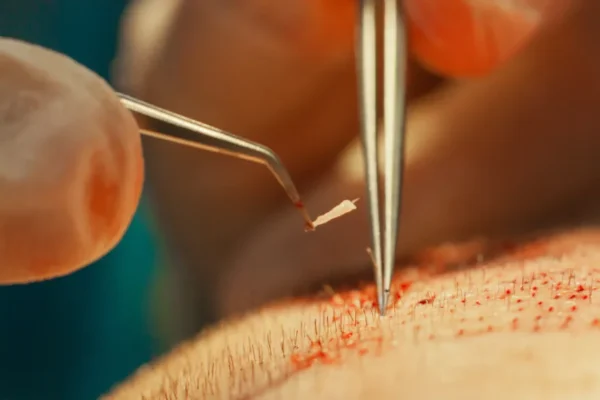
Recipient site graft placement
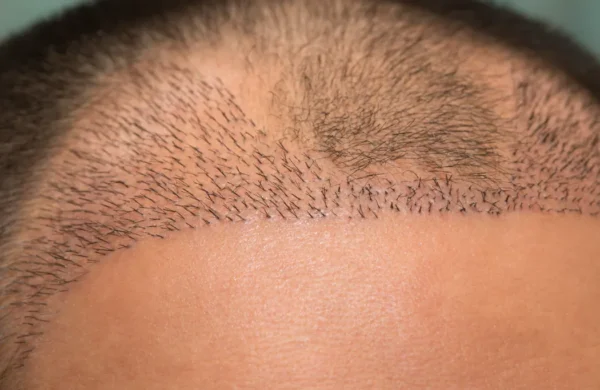
Recipient site grafts placed
FAQS
Am I a suitable candidate for a hair transplant?
Hair transplant is a treatment for the absence of hair. Suitability for a hair transplant depends on various factors such as the extent of hair loss, the availability of an adequate donor area, overall health, and expectations. But essentially, someone who is interested in a permanent solution to their hair loss, and is also open to maintenance therapies for hair thinning. Consulting with us is the best way to determine if you are a suitable candidate.
What is an “FUE” hair transplant and what is NeoGraft?
“F.U.E.” or “Follicular-Unit Extraction” is an advanced, “minimally-invasive” hair transplant method which allows for the harvesting of individual follicles from the back of the head (donor area) without a scalpel or stitches, and therefore leaves no linear scar. NeoGraft™ is a new automated device which facilitates the harvesting of follicles during a Follicular Unit Extraction (FUE) and implantation hair transplant procedure, dramatically improving the accuracy and speed.
Is a hair transplant a painful procedure?
During the hair transplant procedure, local anesthesia is administered to ensure minimal discomfort or pain. Some patients may experience mild soreness or discomfort in the donor and recipient areas after the procedure, but it is usually manageable with pain medication.
What is the recovery process like?
The recovery process can vary depending on the individual and the transplantation method used. Generally, with FUE hair transplant there may be some mild swelling, scabbing, or redness in the recipient area, which typically resolves within a few days to a week. Following post-operative instructions, such as avoiding strenuous activities and proper care of the recipient area, is important for optimal healing.
When will I see the results of a hair transplant?
Hair transplant results are not immediate. After the procedure, the transplanted hair will typically shed within a few weeks to a month. New hair growth will gradually begin within a few months after that, and visible improvement can be seen around six to nine months. Full results may take up to a year to develop.
Are the results of a hair transplant permanent?
Yes, the transplanted hair is typically permanent since the follicles are resistant to the effects of hair loss. However, it’s important to note that existing hair in other areas may still be susceptible to natural hair loss over time which is why maintenance therapies are still necessary.
Are there any risks or complications associated with hair transplants?
As with any surgical procedure, there are potential risks and complications, although they are generally rare. These can include infection, bleeding, scarring, or an unnatural appearance if not performed by a skilled and experienced surgeon. Choosing a reputable clinic and surgeon greatly reduces the risk of complications.
TESTIMONIALS
REFERENCES
Leavitt M, Perez-Meza D, Rao NA, Barusco M, Kaufman KD, Ziering C. Effects of finasteride (1 mg) on hair transplant. Dermatol Surg. 2005 Oct;31(10):1268-76, discussion 1276. doi: 10.1111/j.1524-4725.2005.31202. PMID: 16188178.
RELATED CONTENT
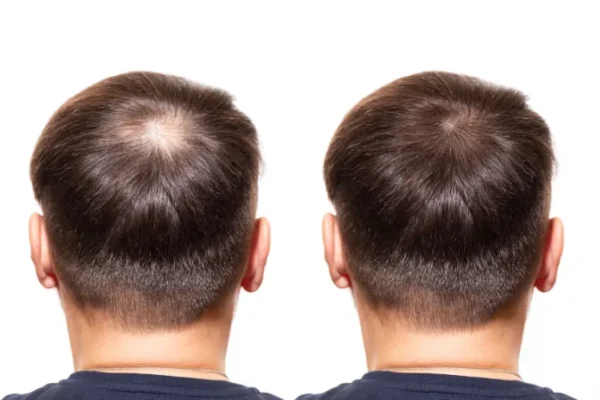
Before & After Gallery
*Individual results may vary.

